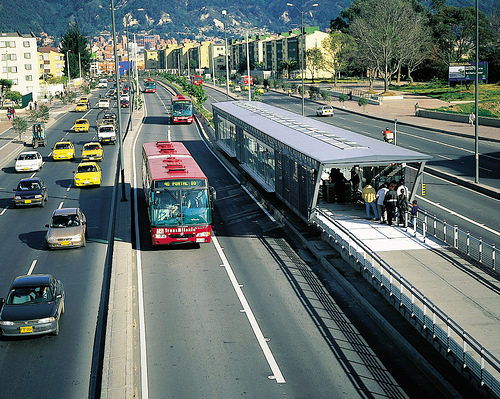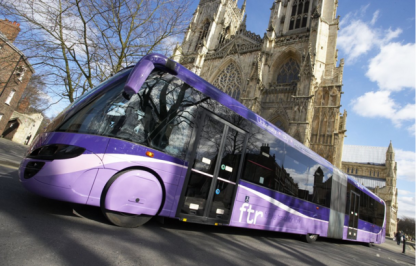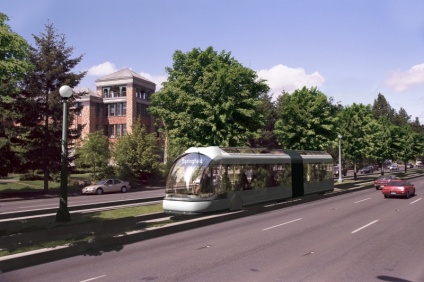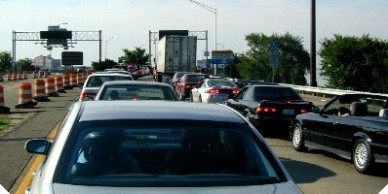Richmond.com is reporting that City Council’s Finance Committee recently killed off the proposed downtown circulator– in part because businesses wouldn’t pay for it.
I’m glad that Richmond.com is tracking this story, as I’m not an avid city council watcher and hadn’t heard what happened to this proposal. It’s odd, however, that they’re posting this story today, June 12, when the vote was two months ago- March 16 (and calling it a “recent” vote). I searched the TD and discovered they had published a story about this same vote back in March. The article is not available on their webpage.
The TD article interviewed some business owners who tell why they don’t support the circulator as proposed. The original proposal included two routes which covered much of downtown. City council voted to kill one route and only support the eastern half- from the convention center to Shockoe. The reaction of business owners was negative:
“What the circulator does is make our downtown whole,” said Michael Byrne, president of the Historic Shockoe Partnership and owner of Richbrau Brewing Co. in Shockoe Slip. “Doing half of it is doing half of nothing.”
Other businesses, however, said the circulator is a service that should extend beyond downtown to include thriving retail areas such as Carytown and the Fan District, as well as an increasingly vibrant restaurant and gallery strip along Broad Street.
“I say do this once and do it right,” said Charles Diradour, whose business leases buildings to well-established restaurants and night spots in the Fan and other neighborhoods west of Belvidere Street. “Let’s not do it piecemeal. If we’re going to be one city, let’s act like one city.”
The piecemeal approach, however, is exactly what one councilperson wanted: “‘I want to get into the circulator business, but I want to get into it slowly,’ said 4th District Councilwoman Kathy C. Graziano, chairwoman of the [Land Use, Housing and Transportation] committee.” – TD 2/21/07
And herein lies a huge problem with public transportation planning- (some) politicians want to phase things in, spend as little as possible until they’re guaranteed financial success. The public, however, will only use public transit when it’s convenient and comfortable- which costs a lot of money upfront to achieve.
You can’t run a bus once an hour and see if it’s popular before increasing service. People won’t ride the bus precisely because it only runs once an hour. And people won’t ride a bus with an imperfect route- they’ll only ride the bus when it stops near their origin and destination without too much meandering in the middle. And achieving those goals costs money.
It’s also fairly well-known that bus lines don’t garner much support from the business community: they’re not permanent and can be axed by any politician or bureaucrat. Trains or light rail, however, usually gain more business support and spur more investment because they’re on a fixed route and likely won’t be voted out of existence. See this article for more on the economic benefits of rail:
Rail Transit In America — A Comprehensive Evaluation of Benefits
Regarding a circulator bus for Richmond- it sounds like local businesses would support it if the city commits to doing it well- a sensible and comprehensive route with frequent service. My money says they’ll support a bus if they’re guaranteed their investment will not be spent towards another failed, city-backed economic development scheme which the city backs out of when it doesn’t create immediate magic downtown.
The circulator concept is not dead, however, as Council President Pantele is very much a supporter. In fact, his ideas are the best I’ve heard so far- he’s publicly advocated for frequent service connecting Carytown to Church Hill, and even floated the idea of a trolley. Richmond.com outlines his hopes:
Pantele’s plan calls for two bidirectional loops, one running from the Bottom to Harrison Street, the other from Harrison Street to Boulevard, with 10-minute service. Although Pantele said the city is not obligated to go through GRTC to create such a transit loop, it would be logical to restructure GRTC’s current route system so that the circulator would serve as a hub for all other routes in the city. Clean lines and frequent service would make the circulator convenient and easy enough for anyone to use.
Imagine taking the bus from Carytown to Church Hill and not needing to consult a schedule or complictaed route map! Let’s hope these plans and those of GRTC CEO John Lewis will mesh to provide reliable, frequent, & affordable transit options not only to suburban locations, but also within the city itself.



